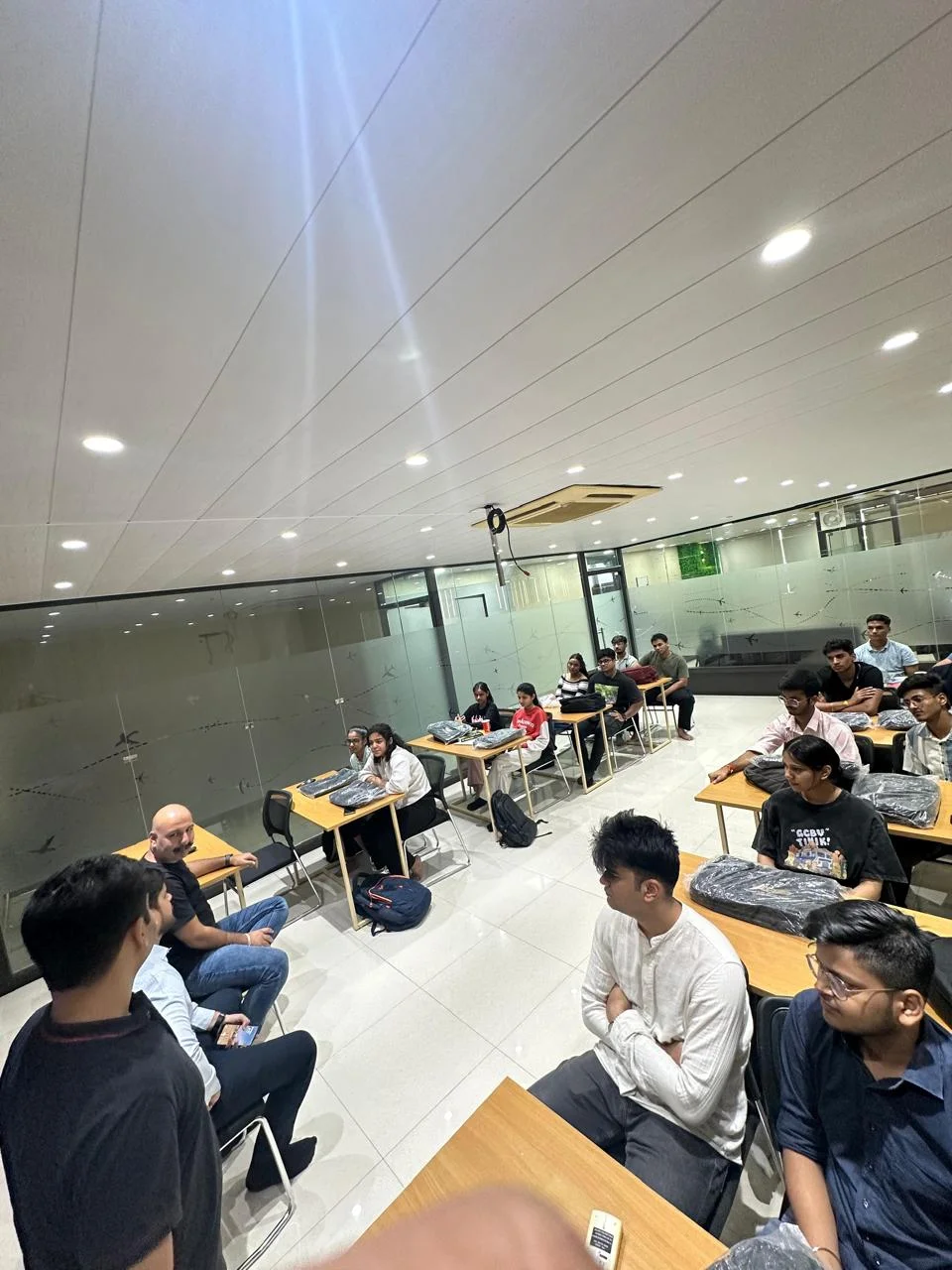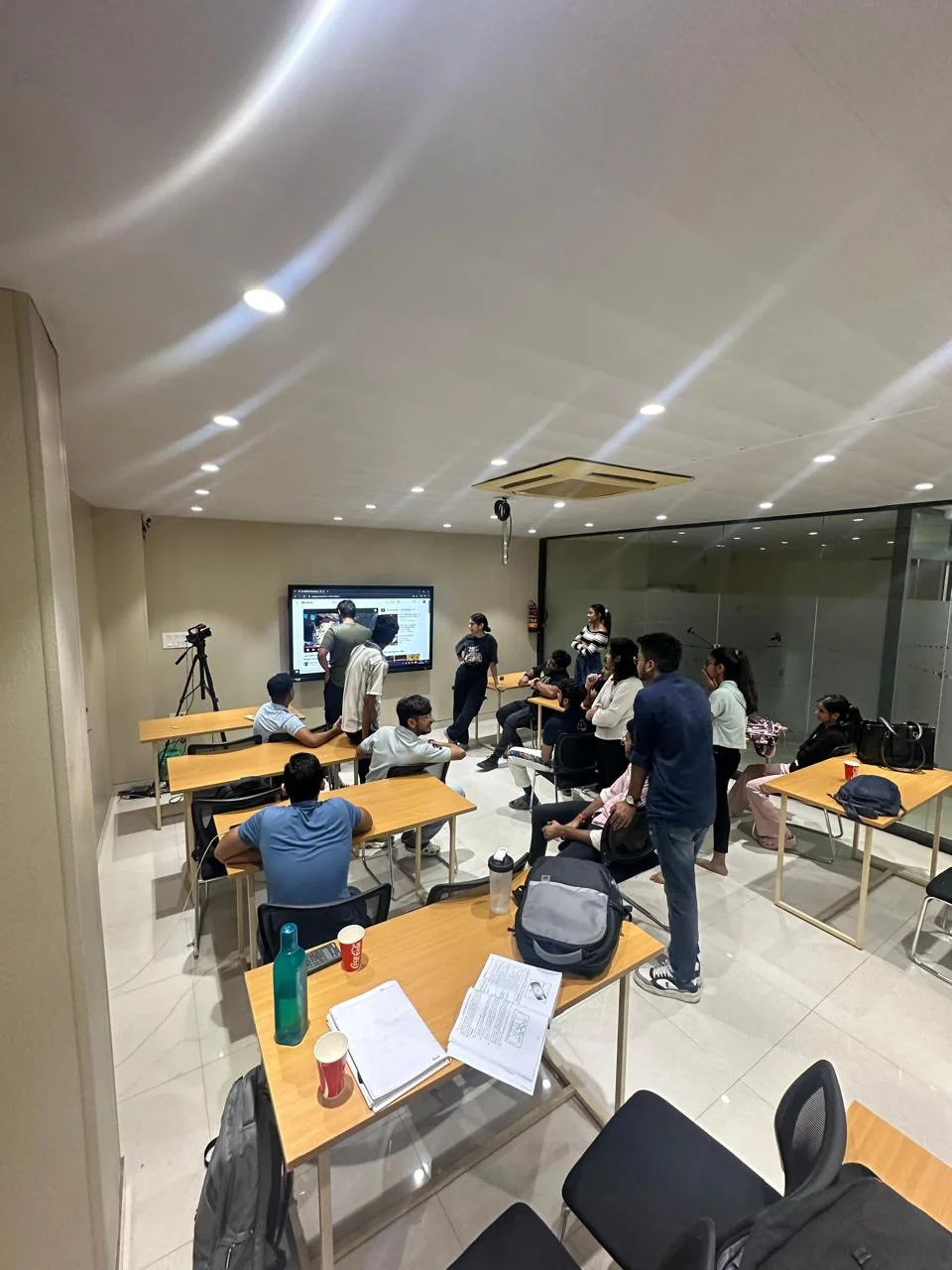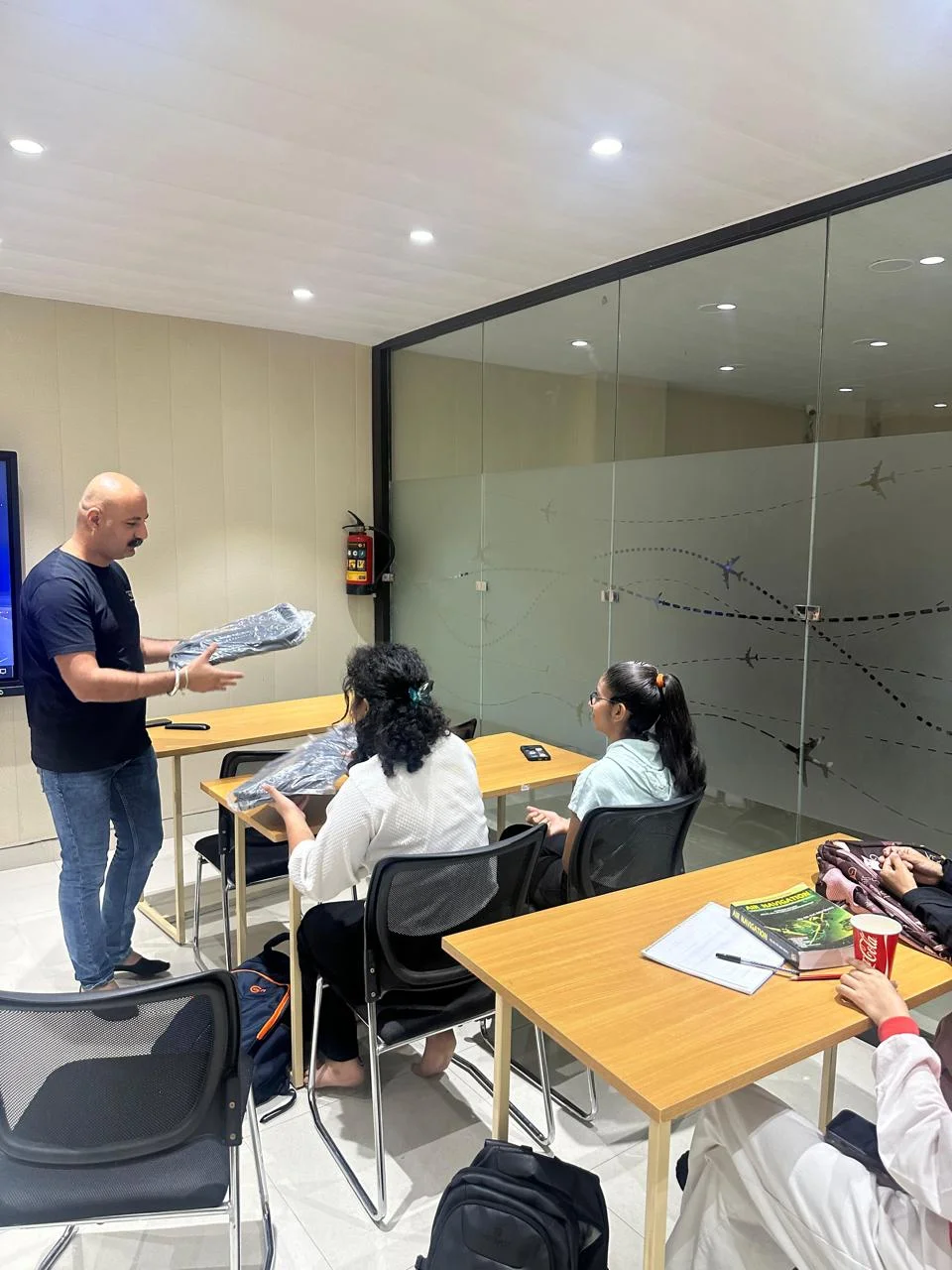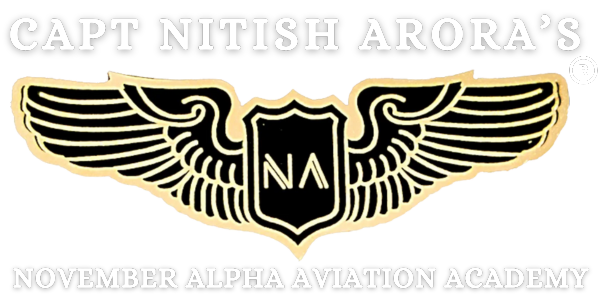ATPL Classes
At November Alpha Aviation, we offer expert-led training tailored to the DGCA ATPL syllabus. Our seasoned instructors, many with airline experience, ensure in-depth understanding of core subjects like Air Navigation, Meteorology, and Air Regulation. With up-to-date study materials, realistic mock tests, and flexible class options, we prepare you to excel under exam conditions.





Our ATPL Training Program:
- Comprehensive Curriculum: November Alpha Aviation offers a well-rounded cabin crew training program that includes in-depth modules on safety procedures, emergency protocols, customer service, communication skills, and more.
- Industry-Experienced Trainers: The institute is staffed by highly qualified trainers with extensive experience in the aviation industry, ensuring that students receive practical, real-world knowledge.
- State-of-the-Art Training Facilities: The institute is equipped with modern facilities and training equipment that simulate real airline environments, offering students a hands-on experience.
- Personalized Attention: November Alpha Aviation focuses on individual development, tailoring training to meet the specific needs of each student and enhancing their strengths.
What is Air Navigation?
The Airline Transport Pilot License (ATPL) is regarded as one of the highest certifications for pilots, enabling you to command an aircraft. If your goal is to become a future captain anywhere in the world, ATPL Ground Classes are the next step, offering significant career advantages.
The Airline Transport Pilot License (ATPL) is the highest level of aircraft pilot certification, opening doors to a career as a commercial airline pilot. At November Alpha Aviation, we offer a comprehensive ATPL program designed to equip you with the knowledge, skills, and experience required to excel in the aviation industry. Our training combines theoretical expertise, practical flight experience, and career-focused guidance to help you achieve your dreams.
Have a question?
The minimum age to begin pilot training is 17 for a Student Pilot License (SPL). To obtain a Commercial Pilot License (CPL), the minimum age is 18 years.
There is no minimum height requirement to become a pilot.
To become a pilot, the minimum educational qualification required is typically a 10+2 with Physics and Mathematics as subjects, usually with a minimum of 50% aggregate in these subjects; this means you need to complete 12th grade with these subjects to be eligible for pilot training.
To obtain a Commercial Pilot License (CPL) from the Directorate General of Civil Aviation (DGCA), a pilot must meet the following requirements: complete a required number of flight hours, pass theoretical examinations on aviation subjects, demonstrate proficiency in a flight test, possess a valid medical certificate (usually Class 1), have adequate English language proficiency, and meet the necessary educational qualifications, typically including 10+2 level schooling with science subjects
Identify visa type: Decide on the type of visa you need and check if you're eligible.
Apply online: Fill out the application form online.
Pay fees: Pay the application fee and any other required fees.
Book an appointment: Schedule an appointment at a visa application center.
Submit documents: Submit the application form and required documents at the visa application center.
Attend an interview: Some countries require an in-person interview.
Track application: Use the confirmation receipt or reference number to check the status of your application.
Collect passport: Pick up your passport at the visa application center or have it returned by courier.
"Conversion flying" refers to the process of a pilot with a pilot license from one country undergoing additional flight training to convert that license to a license issued by another country's aviation authority, essentially allowing them to legally fly commercially in that new jurisdiction; this typically involves familiarization with local regulations, aircraft types, and airspace procedures, often requiring additional flight tests to demonstrate proficiency under the new standards.
For conversion flying in India, the essential flying requirement is a significant amount of cross-country flight experience as Pilot-in-Command (PIC), including a long cross-country flight with multiple landings at different aerodromes, along with night flying hours and often an Instrument Rating (IR) test to convert a foreign pilot license to a DGCA license; this typically involves demonstrating proficiency in both day and night flying conditions, with specific minimum hours required for each category depending on the license being converted.
The course duration is around 3-4 months.
On average, it takes 18 to 24 months to complete the required flying hours and obtain a CPL. The duration may vary due to factors like weather conditions, flight school availability, and individual progress.
The cost varies between ₹40 lakhs to ₹60 lakhs, depending on the flight school and location.
A DGCA Computer Number is a unique identification number that the Directorate General of Civil Aviation (DGCA) issues to pilots and other aviation personnel in India. It is used for a variety of purposes, including taking exams, accessing resources, and maintaining records.
To generate a Computer Number, typically required documents include: a recent passport-sized photograph, signature, date of birth certificate, 10th standard marksheet and pass certificate, 12th standard marksheet and pass certificate, board verification certificates for both 10th and 12th, and sometimes a passport or Aadhaar card for identification purposes; all documents should be self-attested.
A BVC (Board Verification Certificate) is a document issued by a student's educational board, like CBSE or CISCE, to verify the authenticity of their 10th and 12th standard marksheets.
"Conversion flying" refers to the process of a pilot with a pilot license from one country undergoing additional flight training to convert that license to a license issued by another country's aviation authority, essentially allowing them to legally fly commercially in that new jurisdiction; this typically involves familiarization with local regulations, aircraft types, and airspace procedures, often requiring additional flight tests to demonstrate proficiency under the new standards.
Get free expert guidance
Are you aspiring to become a pilot but unsure where to start? Get free expert guidance from industry professionals who will help you navigate the path to success. From choosing the right flight school to preparing for DGCA exams, we provide insights, resources, and mentorship to kickstart your aviation career.
+91 87504 84949
info@captainnitisharora.com
